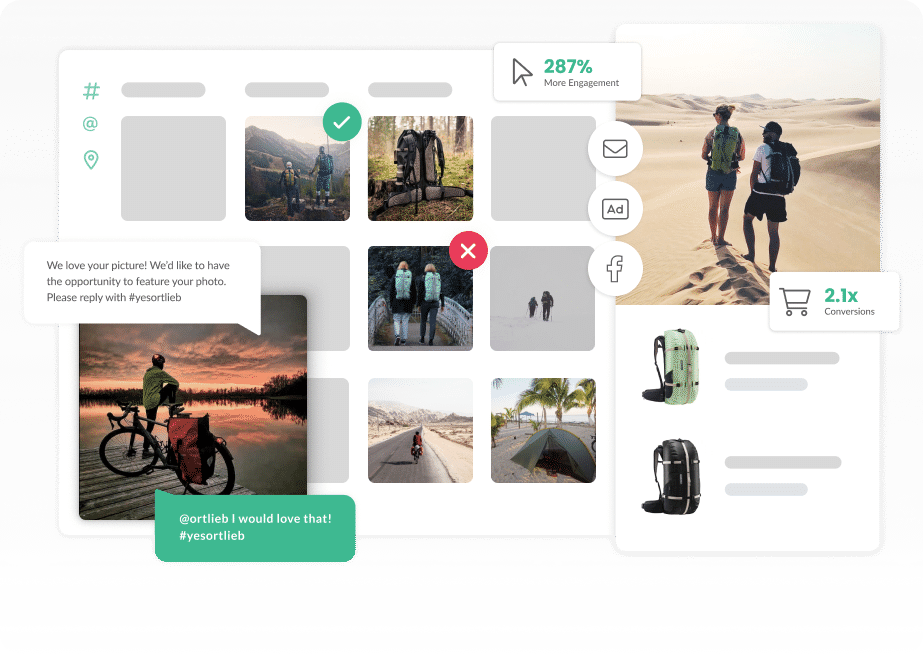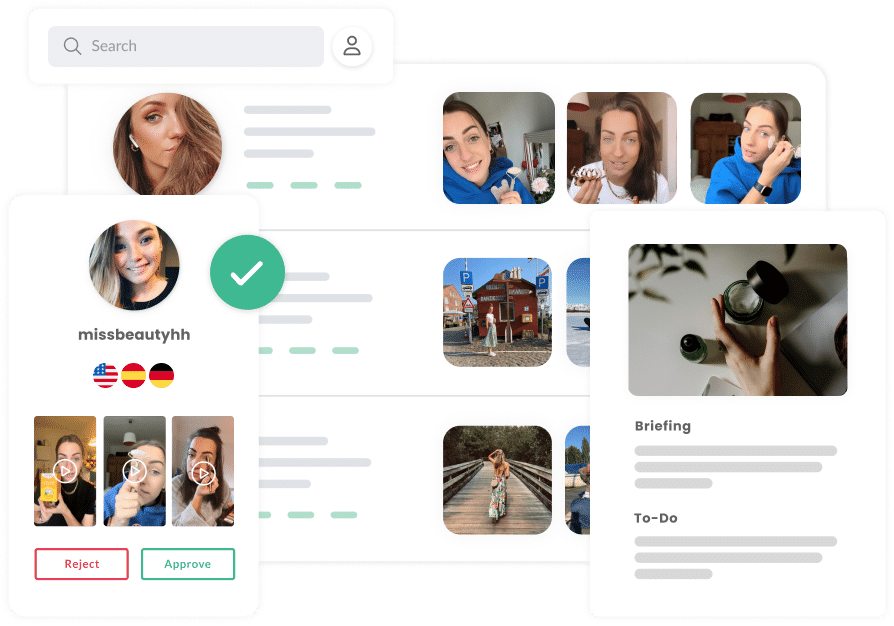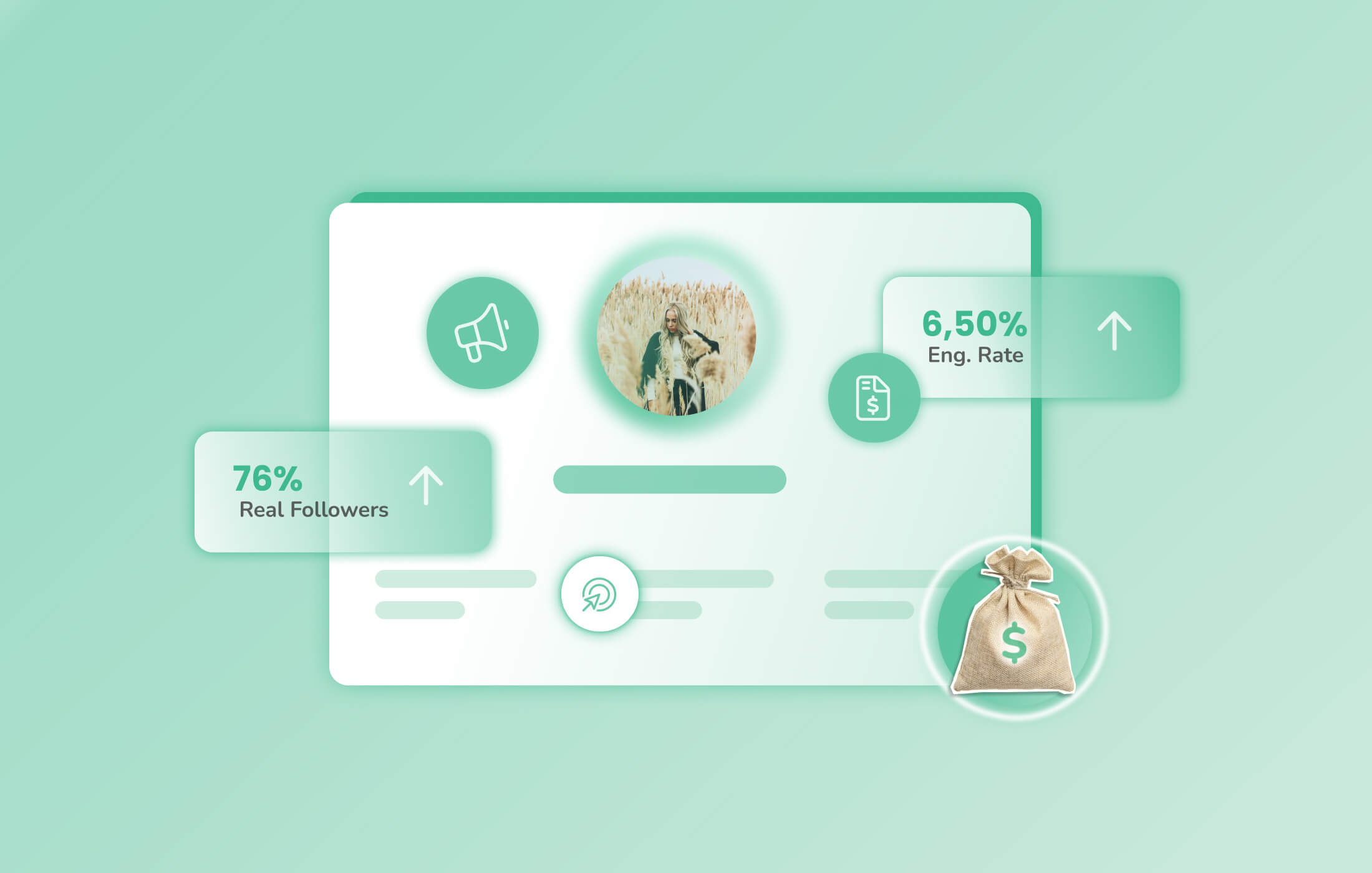“A good photo is one that people look at for more than a second.” Even French photographer Henri Cartier-Bresson recognized how appealing visual information is to people. In marketing, too, it is indispensable to use high-quality visual Social Content to draw attention of potential buyers to one’s own brand. But how exactly do brands get a hold of adequate, valuable visual content?
One way of visual content production is the integration of creator content into marketing. Influencers are constantly in touch with their community, which makes them attractive partners for collaborations. However, some marketers shy away from conducting influencer marketing in-house, mostly out of uncertainty about how to measure success and performance. But they don’t need to. Below, we will show you which four steps positively impact the success of your marketing campaign and consequently your Influencer Marketing ROI as well as how to determine the return on investment.
What is return on investment?
As soon as the ROI is positive, your investment has paid off. To determine the ROI you use this formula:
For a good value, you should aim for an ROI of 7-10% for a normal growing company. For startups and fast-growing companies, the percentage is between 15-25% due to higher investments and consequently higher risks (see hubspot).
4 steps to calculate Influencer Marketing ROI
Influencer Marketing ROI serves as a metric to calculate cost effectiveness of your influencer campaigns. For a successful cooperation, it is not only important to be as effective as possible when working with influencers, but also to accurately define goals and measure relevant key performance indicators (KPIs). The following four steps will teach you how to define goals and KPIs for your corporate campaigns and show you which other factors you should consider when planning campaigns.
1. Determine your budget – for Influencer Marketing ROI
Before any target definition and development of a marketing strategy, the very first step is budgeting your campaign. There is absolutely no point in putting time and energy into a plan that you ultimately can’t implement due to a lack of resources. Therefore, make a list or spreadsheet of all costs involved in planning and executing your campaign. This is the only way to know which type of campaign, for example product seeding, comes into question and whether a campaign will pay off financially in the end.
To determine your budget, you can use different pricing models to calculate individual cost components, or you can use analysis tools. For a more detailed explanation on how to determine influencer marketing costs and associated pricing models, see our blog post on the topic.

Download our fact sheet now and learn how to optimize content production for your brand and reduce costs in no time.
2. Define your goals – for Influencer Marketing ROI
Now it is time for the most important step in planning: defining goals for your campaign. Only with a clear definition is it possible to determine Influencer Marketing ROI, key performance indicators and a marketing strategy. When planning, distinguish between hard and soft goals. Hard goals are increasing revenue and sales, while soft goals are, for example, increasing your own brand awareness or increasing trust in the brand. Here are the most common goals for a campaign:
- Increase brand awareness
- Increase trust in your brand
- Improve engagement
- Improve brand loyalty
- Improve bond with your target audience
- Increase reach
- Increase traffic and conversions
- Increase customer satisfaction
3. Determine your KPIs – key indicators for Influencer Marketing ROI
Once you have defined the goal of your campaign, it is time to determine associated key performance indicators (KPIs). KPIs are metrics or performance indicators that map your company’s performance as a concrete number and make hard-to-measure figures quantifiable. As a result, they help you gain clarity on the effectiveness and progress of your marketing campaign.
Depending on your goal definition and strategy, different metrics are relevant to measure the progress of your campaign. Therefore, it is important to choose the right indicators for each goal. Otherwise, it will quickly look like your campaign is not successful, when in fact you are just tracking wrong metrics. Here are the most important goals with corresponding key performance indicators:
| Goal | KPI |
|---|---|
| Increase brand awareness | Number of followers, reach, impressions, engagement rate, share of voice |
| Bring buyers to your website | Traffic, click-through rate (CTR), time spent on website |
| Increase sales (Conversion) | Sales, ROI, tracking links (promo or discount codes), number of signups and downloads, Click-through rate (CTR) |
The most important KPIs for Influencer Marketing ROI
Here you will find a classification of the most important metrics in terms of Influencer Marketing ROI:
Follower count
The number of followers of the influencer has a direct impact on the price of individual content pieces, and thus the cost of a campaign. If you can measure an increase in followers of your company account during an Influencer Marketing campaign, this can be an indication of the effectiveness of marketing measures.
Reach
Reach is a metric that shows how many individual people actually see a post. If your own account reach increases by working with influencers, it shows that you have addressed the right target group and successfully increased your brand awareness.
Impressions
Impressions are the number of times a piece of content is viewed. If the same person first sees a post in their feed and then later goes back to the influencer’s profile to view it, this counts as two impressions. A high number of impressions indicates that your post is relevant to users and may even have sparked interest in making a purchase decision.
Engagement rate
The engagement rate is a key metric in determining Influencer Marketing ROI. It indicates how active an influencer’s community is and how much followers interact with individual posts. The higher the percentage, the more people engage with a branded post or even actively talk about your brand, which in turn increases your brand awareness.
CTR (Click-Through rate)
The click-through rate (CTR) relates clicks on an ad or link to the number of impressions and therefore measures the effectiveness of ads. A high CTR indicates that the content displayed is relevant and useful for visitors to your website (see Google).
Traffic
Traffic describes the number of visitors to a website. With a detailed analysis of traffic, you can find out from which platform and from which device users access your website and how long they stay on the page. This provides you with helpful information as to which platform and which influencers you should work with for future campaigns.
Share of voice
Share of voice refers to mentions of your brand on social media. A high share of voice demonstrates an intensive exchange about your brand and enables you to influence purchase decisions of your target group.
Conversion
When people convert, they turn from prospects to customers. This includes the classic purchase of a product as well as the registration for a newsletter or the creation of a customer account. Conversions are therefore a key metric for determining the success, revenue and effectiveness of your marketing campaign.
4. Determine your marketing strategy – in the course of Influencer Marketing ROI
No matter which kind of campaign you are planning, developing a marketing strategy is always important. With a smart strategy and effective influencer relationship management, you will have clearer ideas and effectively get your brand message out there. This gives you the opportunity to stand out from your competition.
As you do this, consider which social media platform you will run your marketing campaign on. Depending on the platform, figures such as engagement rate differ greatly, which means that Influencer Marketing ROI also varies depending on the platform. Here are different factors you should consider when choosing a social media platform:
- Target group
- Engagement rate
- Content format
- Method of analysis
- Cost of content creation
Influencer Marketing ROI formula – Evaluating the campaign
Now it is time to evaluate your campaign and determine your Influencer Marketing ROI. As a quick reminder, here is the formula you use to check if your investment has paid off:
Return on Investment = Profit / Investment x 100
In addition to determining ROI, measuring and comparing other KPIs, such as the ones mentioned above, provides information about the success and efficiency of your marketing campaign.
Conclusion
With Influencer Marketing ROI, you make difficult-to-measure marketing campaigns scalable and quantifiable. This key figure makes it much easier to assess which collaborations with influencers are successful and how profitable future campaigns will be.
For a positive Influencer Marketing ROI, it is particularly important to set precise goals and to have the right metrics, but also to be able to find influencers best suitable for your brand. Only if influencers publish authentic and relevant visual Social Content on their account, will you achieve higher engagement rates and in the best case more conversions. You can read more about how to make the most of Social Content in our blog post on the topic.
Sources
https://blog.hubspot.de/marketing/influencer-marketing-leitfaden
https://blog.hubspot.de/sales/return-on-investment
https://hirschtec.eu/kommunikation-im-21-jahrhundert-ist-visuell/
https://www.gabler-banklexikon.de/definition/return-investment-roi-60969
https://support.google.com/google-ads/answer/2615875?hl=de









